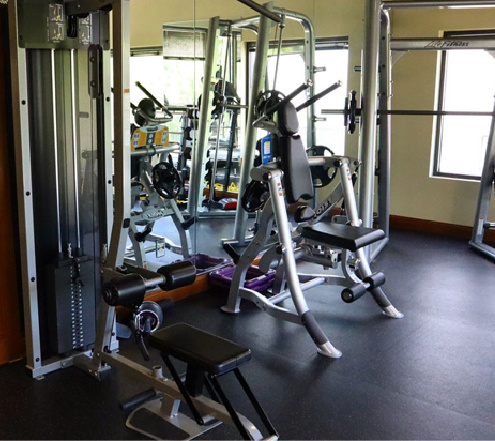Have a pain in the leg? It may be unexpected, but spine discectomy surgery can be the key to relief. It’s easy to associate spine surgery with just fixing back pain or neck pain, but procedures such as a discectomy can actually help…
Have a pain in the leg? It may be unexpected, but spine discectomy surgery can be the key to relief.
It’s easy to associate spine surgery with just fixing back pain or neck pain, but procedures such as a discectomy can actually help with a broad range of symptoms. Spine conditions, including bulging and herniated discs, cause both local and radiating pain that can extend into the upper or lower body. For example, many people with leg pain are surprised to find out that a herniated disc in the lower back is actually to blame.
In fact, according to one recent report, the effect on leg pain is the biggest factor for patients considering discectomy surgery for a herniated disc in the lower back. This is largely because of a condition called sciatica, which can disrupt nerve function in the hips, buttocks, legs, and even toes.
If you’re dealing with chronic leg pain and other difficult symptoms related to a herniated disc, learning more about the potential underlying causes and full range of treatment options can help put you in the driver’s seat of your treatment journey. Dr. James L. Chappuis and the entire team at Spine Center Atlanta is committed to helping you find the relief you deserve.
If you have any questions or want to learn more, please feel free to get in touch.
Sciatica Explained — How a Herniated Disc Can Cause Leg Pain
The spinal discs are key to the health and function of your spine. These round pieces of rubbery, fluid-filled cartilage sit between most of the vertebrae in the spinal column, allowing us to bend, twist, and flex the back. Because of this, they are put under a high amount of stress on a daily basis.
Over time, aging causes the discs and joints in the spine to become more brittle, making them more prone to breakdown. In addition to losing height and bulging out of their normal place, the discs can also develop small cracks and tears in the outer layer. If the inner material begins to push out through a crack or tear, a herniated disc can result.
While not always painful on its own, the herniated disc can cause compression and irritation of the surrounding nerves. In the lower spine, one of these is the long and wide sciatic nerve. Actually a group of nerves, the sciatic branches off from the lower back and travels down both sides of the lower body, through the hips, buttocks, and legs.
If a herniated disc or other spine condition puts pressure on the sciatic nerve a condition called sciatica can result, which causes the following painful symptoms:
- Localized back pain, although this is not always present
- Shooting pains into the hips
- A burning pain in the legs
- Muscle spasms and cramps
- Limping and difficulty walking
- Tingling, numbness, and weakness in the lower extremities
Due to the dispersed nature of symptoms and the range of potential causes, sciatica can often be difficult to diagnose and pinpoint. Diagnostic steps should include a review of medical history, specific movement tests, a physical examination, imagery such as an MRI and diagnostic injections in some cases.
Exploring Nonsurgical Therapy for Herniated Disc Conditions
Before considering a procedure such as discectomy for a herniated disc and leg pain, most doctors will recommend nonsurgical treatment. Although a herniated disc is mainly caused by aging, an individual case can improve. The goal of basic herniated disc treatment is to relieve symptoms and improve function while you monitor the progress of your condition.
Here are some treatments that help a large number of patients find relief:
- Getting rest to take pressure off the lower back and legs
- Using a heating pad to relax tense muscles and improve blood flow
- Alternating heat with cold therapy, such as an ice pack, to relieve inflammation and pain
- Taking over-the-counter medication, such as ibuprofen or Tylenol
- Working with a physical therapist to help you strengthen important supporting muscles and increase range of motion in the lower back and legs
- Making lifestyle changes, such as improving posture, quitting smoking, or eating a healthier diet
- Receiving therapeutic injections to relieve pain on a medium-term basis
- Getting regular low-impact exercise
If you attempt nonsurgical therapy for weeks or months without finding the relief necessary for a good quality of life, spine surgery may be the next step. For herniated discs, discectomy surgery is a very common procedure.
What is a Discectomy and How Can it Help Relieve Back Pain and Leg Pain?
There are a number of approaches to discectomy surgery, including traditional discectomy, microdiscectomy, and discectomy fusions. Basically, any type of discectomy surgery involves the surgeon accessing the spine and removing all or part of a damaged disc in the spine.
If the disc is mostly intact and stable, the spine surgeon can perform a microdiscectomy. This involves a small incision and a surgical microscope that helps the surgeon limit muscle disruption while removing only the part of the herniated disc that is causing nerve compression. In the case of sciatica, by relieving pressure and irritation on the sciatic nerve, patients can experience relief of lower body symptoms, including leg pain.
If the herniated disc has severely degenerated, a full discectomy surgery and fusion may be required. This is when the surgeon removes the entire disc and replaces it with bone graft material and hardware to fuse that section of the spine together. This provides stability and can address nerve compression by creating space in the spinal column.
The Importance of the Discectomy Recovery Period for Long-Term Relief
No matter how successful an individual discectomy surgery is, the recovery period is absolutely critical to ensuring a positive outcome. The body needs time to heal, so it’s important not to rush into any strenuous activity, even for minimally invasive procedures that only require a small incision. Just as importantly, patients should try to be as active as possible and resume normal activities according to their recommended schedule.
Physical therapy and rehabilitation can help during the recovery period, especially for people dealing with leg pain as a result of a herniated disc. A trained and experienced therapist can recommend exercises designed to rebuild strength and mobility.
Experience the Difference at Spine Center Atlanta
If you’re considering discectomy surgery to relieve any symptoms associated with a herniated disc, turn to the compassionate experts at Spine Center Atlanta. For years, Dr. Chappuis and his highly talented team have been helping patients get back to the quality of life they deserve. Our state-of-the-art surgery center has received the coveted AAAASF accreditation representing a commitment to the highest standards of patient safety and care.
To learn more and schedule your initial consultation, contact us today.






























